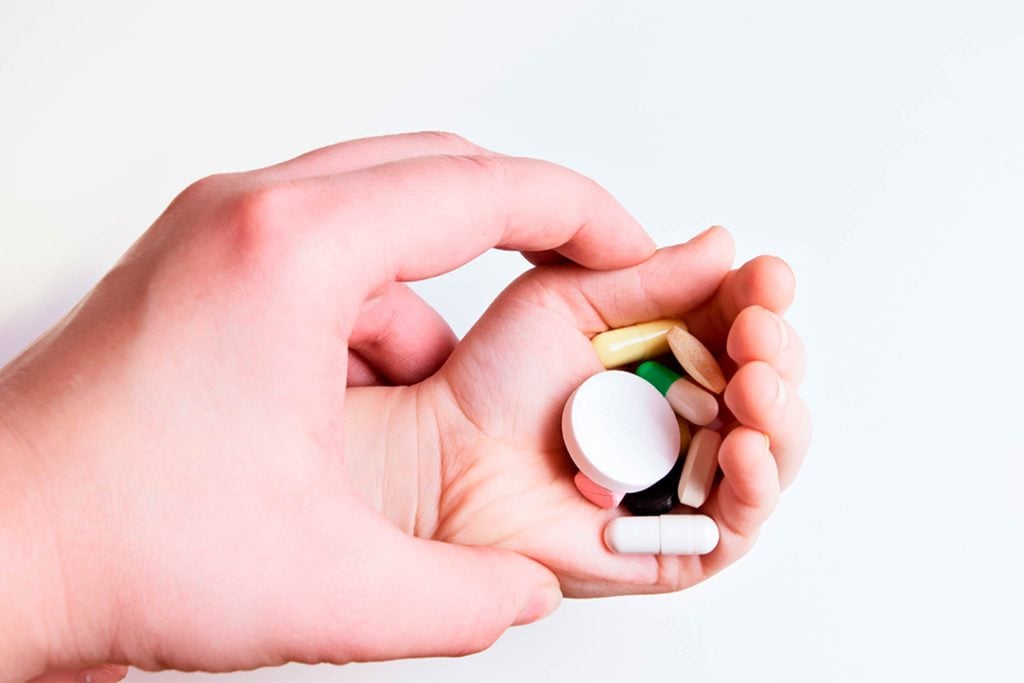You’re Probably Overdosing Your Kid When They’re Sick—Here’s Why
Updated: Jul. 06, 2017
Two teaspoons equal a tablespoon, right? Maybe? Actually not, and this kind of sloppy math is one reason parents end up giving kids the wrong amount of medication most of the time.
It’s hard for parents to watch their children suffer with a cold or other illness, so naturally we’re going to reach for medication if we think it will help. (Try these baby cold remedies.) Unfortunately, we’re not doling out the right amounts, according to a new study published in the journal Pediatrics.
In a trial of 500 random parents, researchers from NYU Langone Medical Center found that nearly 84 percent of parents made measurement errors when giving their child medication, Medpage Today reports. And nearly one third of parents made a large error, with 12 percent accidentally dispensing an amount equivalent to an overdose. (Here are some things your pediatrician won’t tell you.)
While it’s easy to misread the little numbers on medicine droppers and spoons in the middle of the night (especially when you’re sleep deprived), researchers blame the incorrect dosing on the way parents give medicine to their children. “If the tool is too large, parents are more likely to overdose. If the tool is too small to allow the parent to measure the full dose with a single measurement, then parents need to use math skills to figure out how to accurately measure more than one instrument-full, which increases the likelihood of a dosing error,” H. Shonna Yin, MD, MS, of NYU Langone Medical Center, told Medpage Today. “Giving a parent a dosing tool, like an oral syringe, that is the right size, can have a big impact on whether a parent will dose a medication accurately.”
 For the trial, Dr. Yin and her team surveyed English and Spanish-speaking parents who had children under the age of 8. Participants were placed into one of four groups, each of which used different measurement methods, including text and pictogram instructions with a millileter (mL) measuring tool; text, and pictogram instructions with a mL/tsp label and tool; as well as text-only instructions with a mL/tsp label and tool or a mL-only label and tool.
For the trial, Dr. Yin and her team surveyed English and Spanish-speaking parents who had children under the age of 8. Participants were placed into one of four groups, each of which used different measurement methods, including text and pictogram instructions with a millileter (mL) measuring tool; text, and pictogram instructions with a mL/tsp label and tool; as well as text-only instructions with a mL/tsp label and tool or a mL-only label and tool.
Parents who were part of the text and pictogram dosing instructions with a mL-only label and tools had the fewest instances of dosage mistakes in their measurements as opposed to those in the group who received the mL/tsp label and tools with or without pictographic dosing instructions.
Based on the findings, Dr. Yin is recommending that there be “system-wide changes in the design of medication labels and provision of dosing tools to help reduce medication errors in children.” She believes that a set of standards for dosing and measuring should be developed and used by both pharmacies and medicine manufactures, along with an increase in availability of information regarding proper dosing instructions for parents.
Following the conclusion of this study, researchers began testing a “real world” randomized trial of labeling and dosing strategy for pediatric liquid medications that could potentially help bring about the change needed in dosing instructions.
These are the natural cold and cough remedies for kids that every parent should know about.
